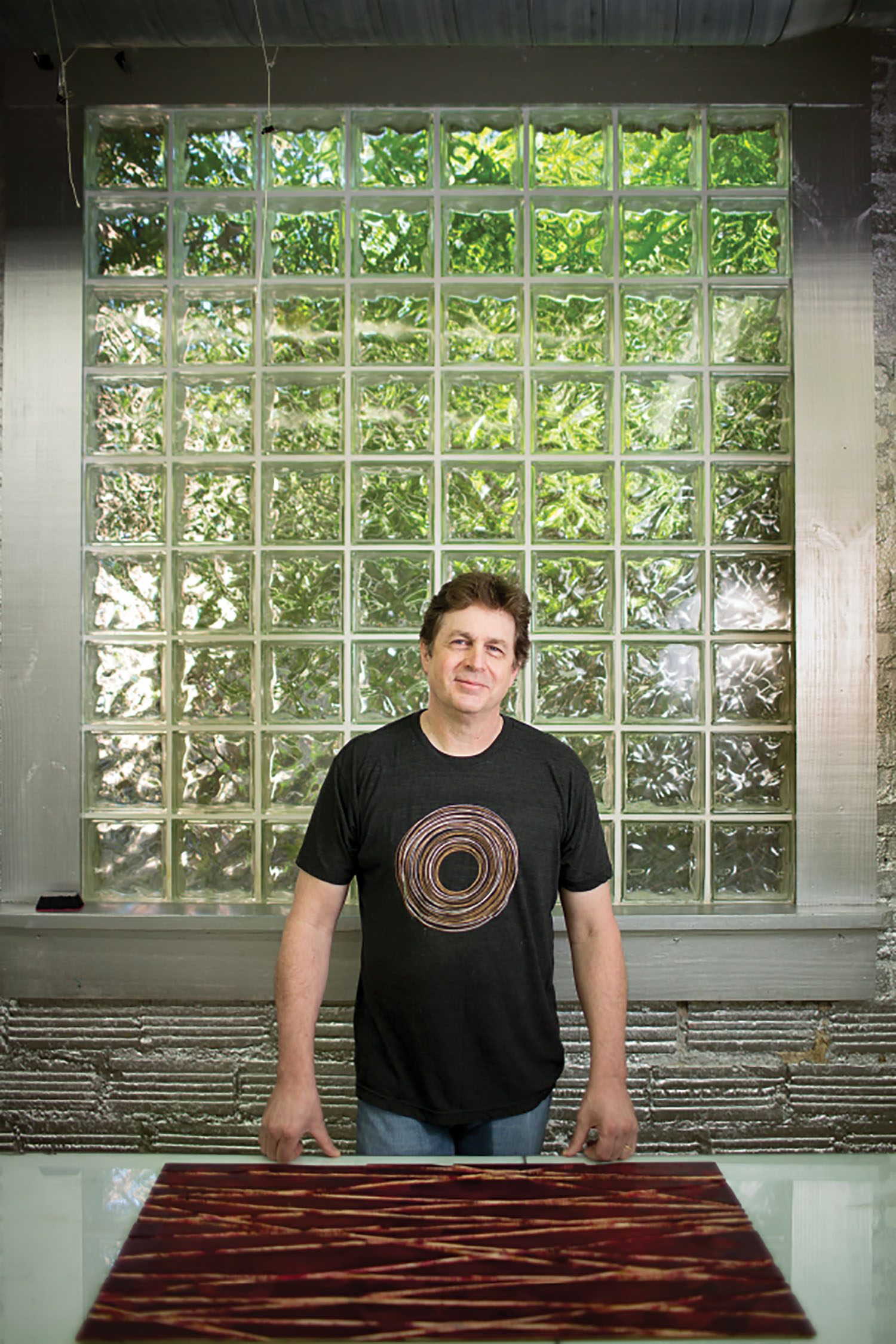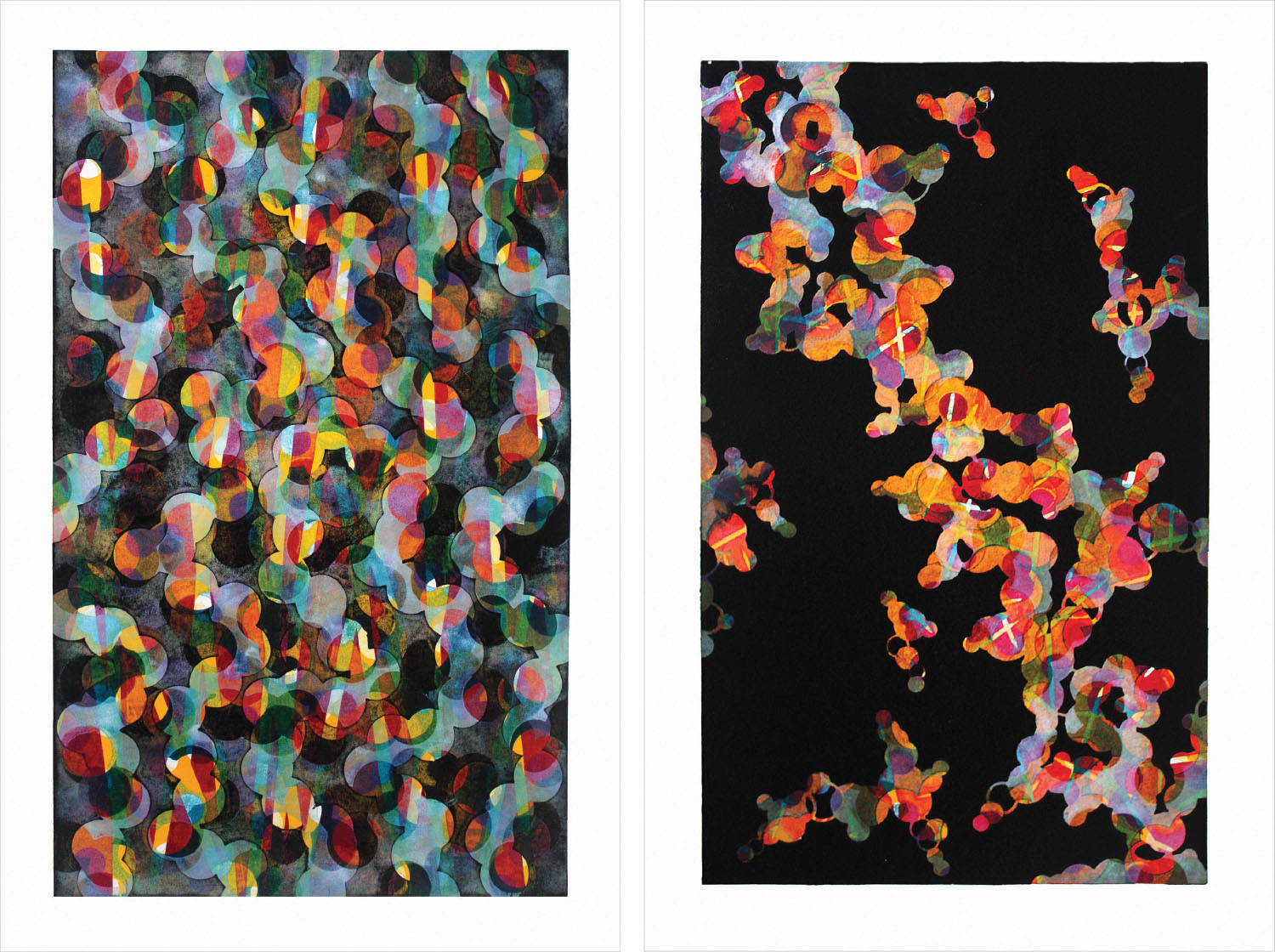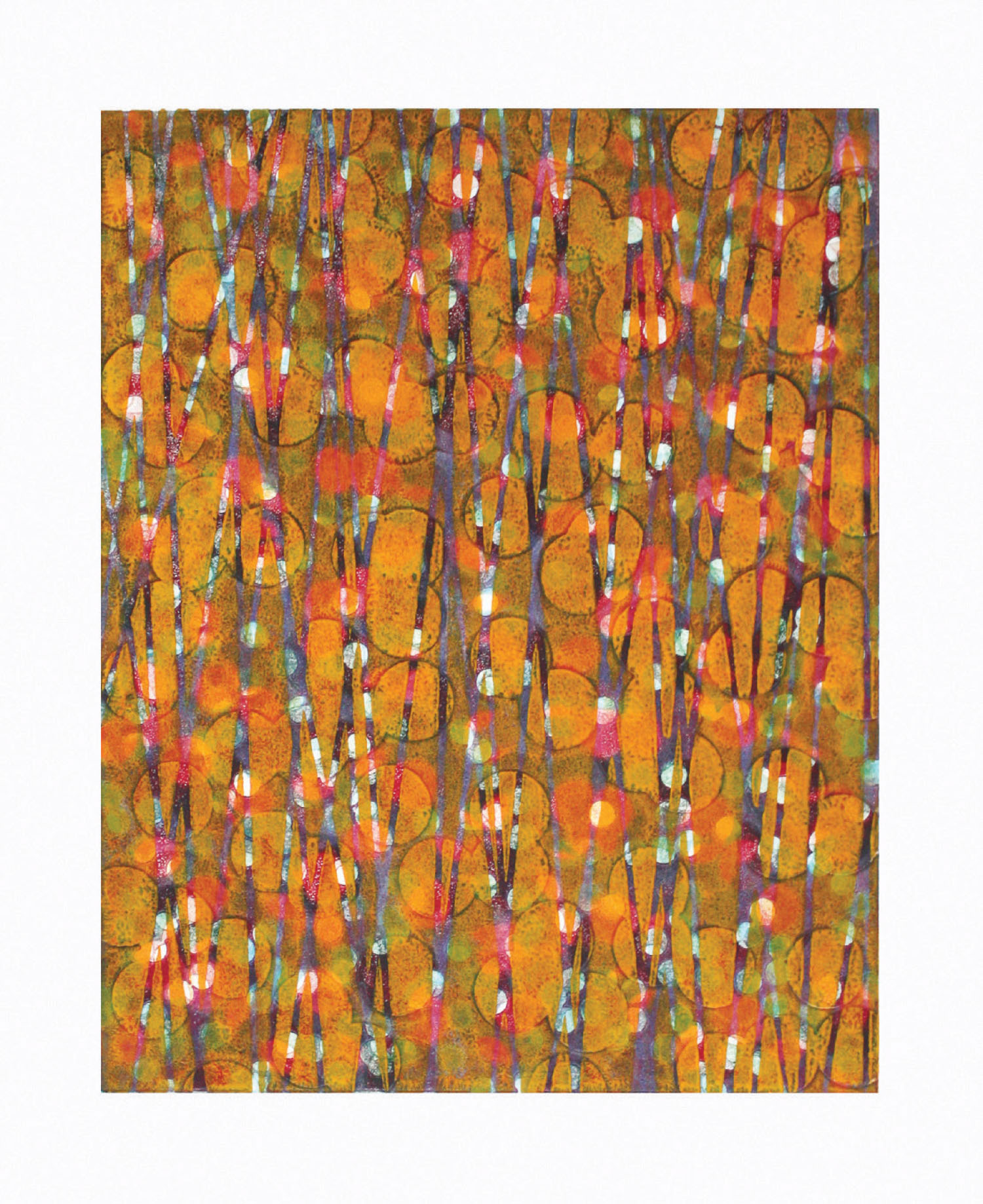
He became interested in the machinery before the actual artwork that it made — and that’s how Dave Ladendorf, a former tech manager, taught himself to be a printmaker. His art grew out of his experiments with the impressive assortment of letterpress and printmaking equipment at Asheville Bookworks, where he’s now a staff member.
Initially, Ladendorf’s work was figurative, and still is, to a degree. He attributes his growing concentration on color to the bold attempt of a 25-color linoleum reduction cut he considered “a successful failure.”

“I realized that I needed to learn a lot more about color and ink then,” he makes clear. “So I started experimenting.”
He’s been printing for six years, and over the past three, Ladendorf has used Masonite plates to test the transformation of colors, both opaque and transparent, as they are layered. “It’s how your perception of color changes as [the shades] are juxtaposed against each other,” the printmaker explains, then references painter Josef Albers of Black Mountain College (1933-1949), who had similar approaches. “I know it sounds dry,” he adds, “but it’s fascinating to see colors change in ways you wouldn’t think, just by placing a new color right next to it.”
It didn’t take him long to realize that blends of solid colors were limiting, so he began adding arbitrary imagery to plates using risky new methods — drills, saws, chisels, and anything else he could think of. “Then, the experiment took on a new life,” he recalls.
Ladendorf uses wet-on-wet printing. “There’s a lot more at play,” he says. “You can add multiple layers like regular printing, but you can also be reductive.”
Through this method, he generates abstract imagery that highlights color, rhythm, and “controlled randomness,” as he describes it. He plays with the viscosity of the ink and the pressure of the press, leading to a series of revelations such as new textures, “ghosting” — the replication of faint, often unintended images — and color mixing.

In his current collection, Ladendorf is thinking bigger by producing prints that are 2’x 4’ in size, and in series of threes. He leaves experimenting to the smaller-form printing, where he most commonly creates five editions. The printmaker’s new approach begins with mechanically made shapes that are then bestowed expressive and organic qualities, conveying his now-extensive knowledge of color and layering. It’s apparent that Ladendorf’s interest in the technical aspects of printing remains to this day.
With this larger-scale format, the opportunities are greater — and not as many versions are required. “The imagery and colors can be bolder, and even more simple and subtle,” he says. “It’s a more visceral and physical experience, which adds to the fun.
“I’m looking for that place where an interesting pattern becomes a composition.”

Dave Ladendorf, Asheville Bookworks (428 Haywood Road, West Asheville). For more information, call 828-255-8444 or see ashevillebookworks.com. The artist’s work is included in the gallery’s “It’s Alive! Frankenstein, 200 years” show, running through October 26 at Asheville Bookworks. Ladendorf’s work will be included at BlackBird Frame & Art (365 Merrimon Ave.) during the holiday season as part of a group show of works by members of the Asheville Printmakers. See ashevilleprintmakers.org for more information.